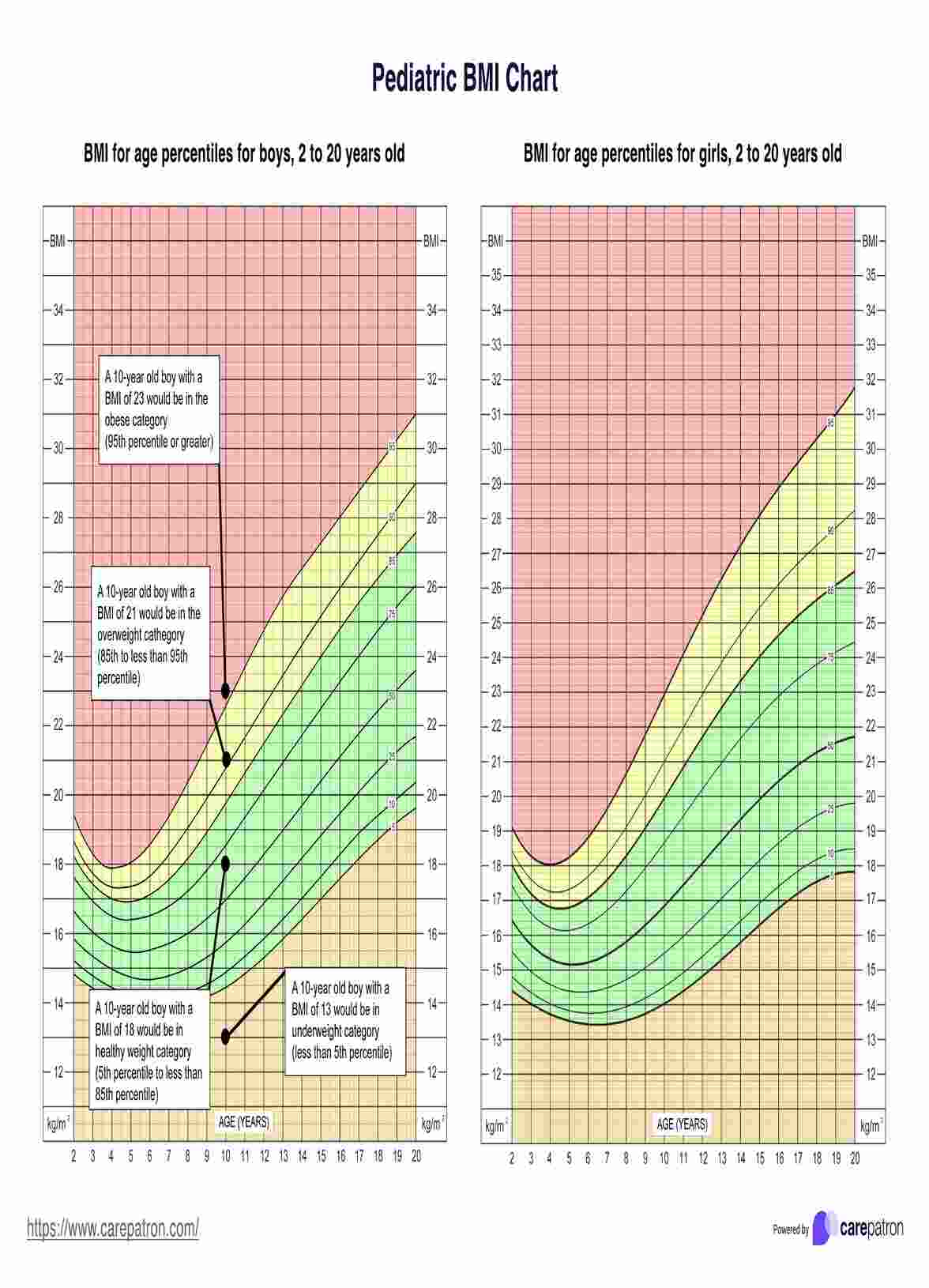Pediatric BMI is calculated using the same formula as adult BMI: weight in kilograms divided by height in meters squared (kg/m²). However, its interpretation for children and teens differs due to age and sex.

Pediatric BMI Chart
Download our Pediatric BMI Chart for a resource that can assist you in assessing and documenting a child's weight status.
Use Template
Pediatric BMI Chart Template
Commonly asked questions
BMI percentiles rank a child's BMI relative to their peers' BMI (same age and sex). For example, a BMI in the 60th percentile means the child's BMI is higher than 60% of children of the same age and sex.
Pediatric BMI should typically be checked annually during well-child visits, starting at age 2. More frequent assessments may be needed if there are concerns about a child's growth or weight.
EHR and practice management software
Get started for free
*No credit card required
Free
$0/usd
Unlimited clients
Telehealth
1GB of storage
Client portal text
Automated billing and online payments











